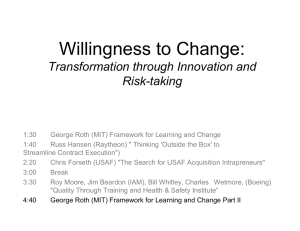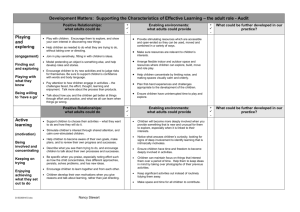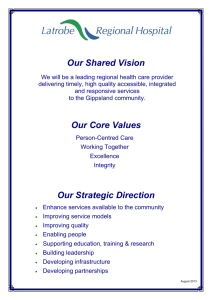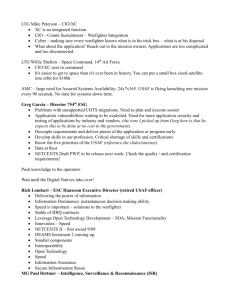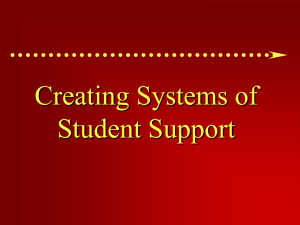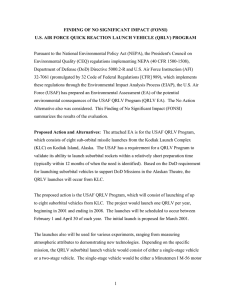Willingness to Change: Transformation through Innovation and Risk-taking
advertisement
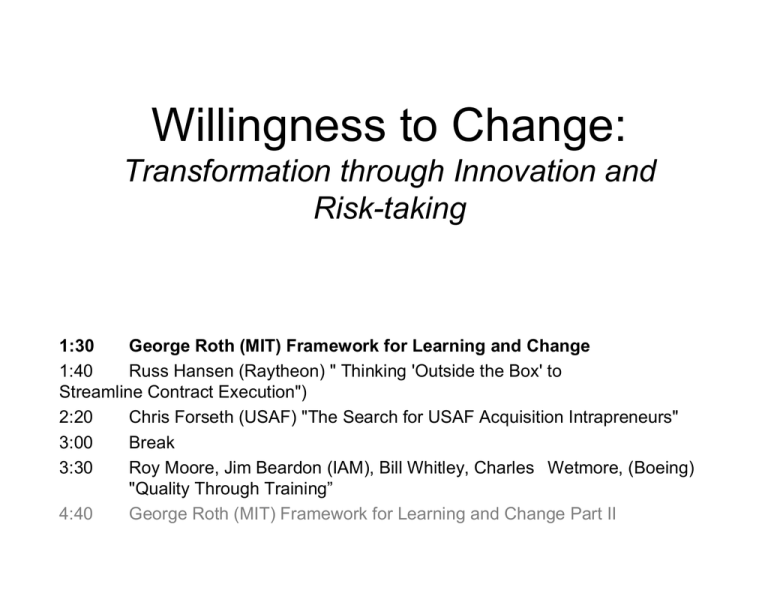
Willingness to Change: Transformation through Innovation and Risk-taking 1:30 George Roth (MIT) Framework for Learning and Change 1:40 Russ Hansen (Raytheon) " Thinking 'Outside the Box' to Streamline Contract Execution") 2:20 Chris Forseth (USAF) "The Search for USAF Acquisition Intrapreneurs" 3:00 Break 3:30 Roy Moore, Jim Beardon (IAM), Bill Whitley, Charles Wetmore, (Boeing) "Quality Through Training” 4:40 George Roth (MIT) Framework for Learning and Change Part II Planned Change Model Why Change? Determining the need for change Determining the degree of choice about whether to change Defining the desired future state Describing the present state Getting from here to there: Assessing the present in terms of the future to determine the work to be done Managing during the transition state From Beckhard & Harris, Organizational Transitions, Addison-Wesley, 1987 Using Planned Change Model • • • • Need for change Defining future state Analyzing present state Managing transition – Unfreezing – Modeling – Refreezing Force Field Analysis Social systems exist in a state of homeostasis - the ability or tendency of an organism to maintain equilibrium and hold to the status quo = Force Field Analysis • a conceptual tool to help in the observation (and research), diagnosis and intervention • involves an inquiry into the enabling and inhibiting forces • process of change includes active experimentation by increasing enabling forces or relaxing inhibiting forces Example: Test, Inc. Force Field Diagram Enabling Description of crisis by VP Successful model within corp. Employees anxious for TQM Customers demand quality Some QIT members were enthusiastic Pride in accomplishments Common vision Momentum of effort Cost of quality recognized (23-25% of sales) Communication to employees a position that cannot be backed down from Inhibiting Lack of knowledge/skill by QIT members (no training capacity in place) Lack of sr. mgmt involvement/commitment (Delegated responsibility to next management level—teaching classes, development of metrics, etc.) Inadequate personal time devoted to quality improvement process (cost of quality assessment work was delayed week after week because it was seen as an “extra” job) Lack of dedicated program coordinator (borrowed corporate person who could not always be there when they needed him) Conflicting signals (quality vs. meeting schedule) Concerns that efforts will not complement corp. TQM program Trainers set unrealistic employee expectation Already had a false start: people feel like it's another “program-of-the-month” (Operations within TEE had “Quality Appreciation Day”; seen as start-stop-startstop...) Note: factors listed in italics were indicated by interviewees as most important Force Field Analysis ≠ Force Field Analysis ≠ Force Field Analysis Change in the system comes from – Increasing enabling forces – Relaxing inhibiting forces Exercise: – Take notes by mapping enabling and inhibiting forces in the presentations that follow – Draw arrows to consider approximate size – If there aren’t enough factors to have system in balance, consider (ask about) what forces you might be missing Force Field Analysis Enabling factors Inhibiting factors List of factors • List of factors Willingness to Change Speakers • Russ Hansen (Raytheon) " Thinking 'Outside the Box' to Streamline Contract Execution") • Chris Forseth (USAF) "The Search for USAF Acquisition Intrapreneurs" • Roy Moore, Jim Beardon (IAM), Bill Whitley, Charles Wetmore, (Boeing) "Quality Through Training and Health & Safety Institute” Force Field Analysis Enabling Forces Restraining Forces Thinking 'Outside the Box' to Streamline Contract Execution The Search for USAF Acquisition Intrapreneurs Quality Through Training and Health & Safety Institute
